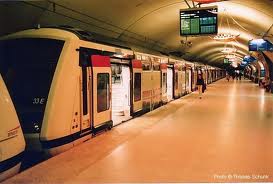

With the improvement of construction techniques and the intense urban development taking place, railway tunnels are nowadays becoming common place in most of the big cities.
This is especially the case due to the development of new high speed railway lines which need to cross the cities to reach central stations normally placed within its periphery, leading to the construction of long underground tunnels that do not interfere with existing constructions and infrastructure.
Connecting networks One of the main goals of constructing railway tunnels under the cities is to connect previously independent networks with different stations. This has been the case in the 90's in Paris with the construction of EOLE, which allows the connection of the western and eastern networks thanks to a new tunnel between Gare St Lazare and Gare du Nord.
Also in Berlin, huge railway tunnels have been built. A 3.5 km long tunnel was needed to cross the city in a north south direction. The main line tunnel comprises 4 parallel tubes.
Another example can be found in Madrid, where tunnels allow the access of the high speed train to the central station of Atocha, and a new tunnel is to be built for this same train linking the main two railway stations of Atocha and Chamartin, along almost 8 kilometers under the very center of the city.
Related cases
- Porta Susa revitalisation - Torino - Italy
- Main line tunnel - Berlin - Germany
- Bologna-Firenza high speed railway line - Italy
- EOLE - Paris -France
Examples
- Berlin main line - Berlin - Germany
- Genoa railway tunnel - Genoa - Italy
